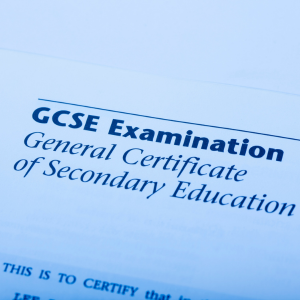Farah Najam enumerates strategies experts suggest for aiding our youth in effective conflict resolving.
Conflict is a natural, vital part of life. Teaching our youth, how to manage conflict in a productive way, can help to reduce incidents of violent behavior. Conflict Resolution Education is a beneficial component of a comprehensive violence prevention and intervention program used in schools.
Experts identify four school-based conflict resolution strategies which can be employed in other settings also. These are commonly known as:
(1) Peer Mediation Approach
This strategy enables specially trained student mediators to work with their peers in resolving conflicts. It has been reported that this approach to conflict resolution reduced playground fighting to the extent that peer mediators found themselves out of job.
(2) Process Curriculum Approach
Teachers implement the Process Curriculum Approach by devoting a specific time – a daily lesson – to the principles and processes of conflict resolution. This helps disputants envision scenarios and generate options for achieving results.
(3) Peaceable Classroom Approach
This is an integration of conflict resolution in the curriculum and daily management of the classroom. Instructional methods of cooperative learning and academic controversy are used, thus decreasing the need of teacher to address the problems directly.
(4) Peaceable School Approach
The Peaceable School Approach incorporates the above three approaches for creating schools, where conflict resolution is adopted by every member of the school community. These schools promote a climate that challenges all its members to believe and act on the understanding that a diverse, non-violent society is a realistic goal.
Constructive Criticism and Conflict
Here are some constructive feedback techniques which volunteers and supervisors can use for avoiding anger and conflict.
(a) Use positive language. Such questions as “did you ever try to do it, like this?” are much better as compared to, “You never seem to get this right.”
(b) Constructive feedback comes without strings. The supervisors should present feedback in an unthreatening manner designed to help. This allows the student to ask questions, take risks with the new things, and not to fear retribution or rejection.
(c) Be specific. Even if the student has several areas needing improvement, stick with one at a time.
(d) Set the tone for change. It may be outlining new training, assigning a mentor, monitoring by volunteer or supervisor, and giving an award, when the change is fully implemented.
The 5 Win/Win Steps
- Cool down – those involved in the conflict are asked to collect their thoughts calmly.
- I feel… – one person explains their side of the story, using the “I feel” message.
- You feel… – the listener paraphrases what was said.
- Brainstorm – those involved suggest ideas to solve the problem.
- Shake hands – this is the ending step, signaling that all is done and things are okay.
Note: Steps #2 and #3 are done twice.
Literature
Literature is a natural vehicle for teaching. Stories dealing with conflict management can be used as tools for observing and reinforcing conflict management concepts and skills. While reading the stories, the teacher may do the following:
- Stop reading at the point of conflict and ask: “What is the conflict? How do you think it will be resolved?”
- After completing the story, ask: “How was the conflict resolved? Was it an effective, win-win resolution? Would you have done differently?”
The Garbage Can
The teacher explains that the classroom is a positive place for learning. Furthermore, she understands that the students are often carrying to school a lot of problems, which she refers to as garbage: they may have gotten up late, missed the bus or had an argument. This garbage is distracting and might interfere with learning in class. Therefore, students are encouraged to deposit all negative thoughts and feelings into an imaginary garbage can outside the classroom.
Taking a Look at Conflict Behavior
Students are asked to analyze a situation of conflict they were recently involved in by answering the following questions:
- What happened?
- How did you feel?
- What did you do?
- Did this resolve the conflict?
- If not, what could you have done to solve it?
- What will you do next time?
Conflict Web Subject
This activity invites students to consider the big picture of the conflict.
- In the center of a paper, the word ‘conflict’ is written and circled.
- Students suggest associations and memories the word ‘conflict’ evokes. A line is drawn from the main circle, and each suggestion is written down.
- The web continues to grow, as long as interest remains high.
This is followed by a discussion about the elements all conflicts seem to have in common, and the actions that make the conflict worse or cool it down.
Options for Conflict Resolution
Active Listening – have one-to-one meetings with each of the conflicting parties. Do not offer or promise resolution; rather, assure each side of a safe, non-judgmental, and confidential forum for talking.
Shuttle/Liaison – seek to help each side to articulate their grievances and needs in a way that the other side can recognize and understand. This helps both to step back and calmly analyze what is happening, as well as find constructive ways of expressing their concerns.
Encounter/Facilitate – serve as a facilitator and bring the parties together to facilitate the process.
Seek Support – call someone unrelated to the conflict to assist you and/or the parties in working through their conflict.
‘I feel’ Messages
These messages allow the students to voice their feelings.
| Building an ‘I feel’ Message
I feel ______ (explain, how it made you feel) When ______(tell the person exactly, what they did) I want ______(say, what you want from them) Examples: “I feel sad, when you call me names.” |
Adopting such strategies for conflict management will enable our kids to deal with conflict, empathize with their peers, and, eventually, work towards creating an environment of mutual understanding all around them, Insha’Allah.







